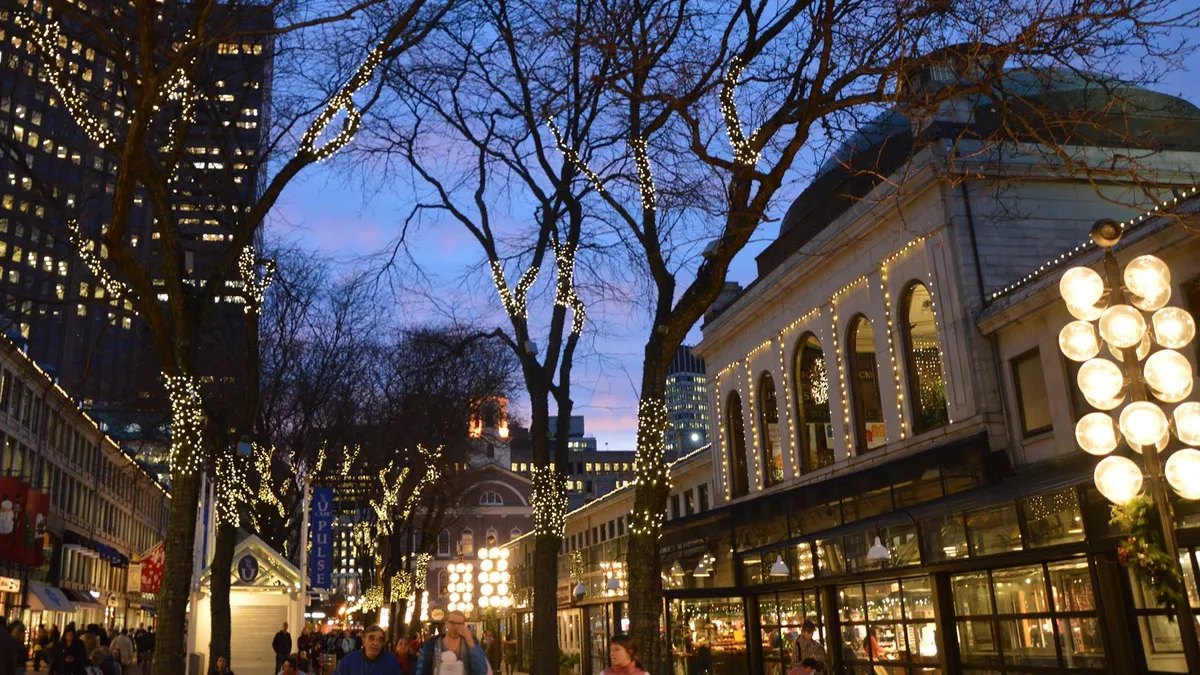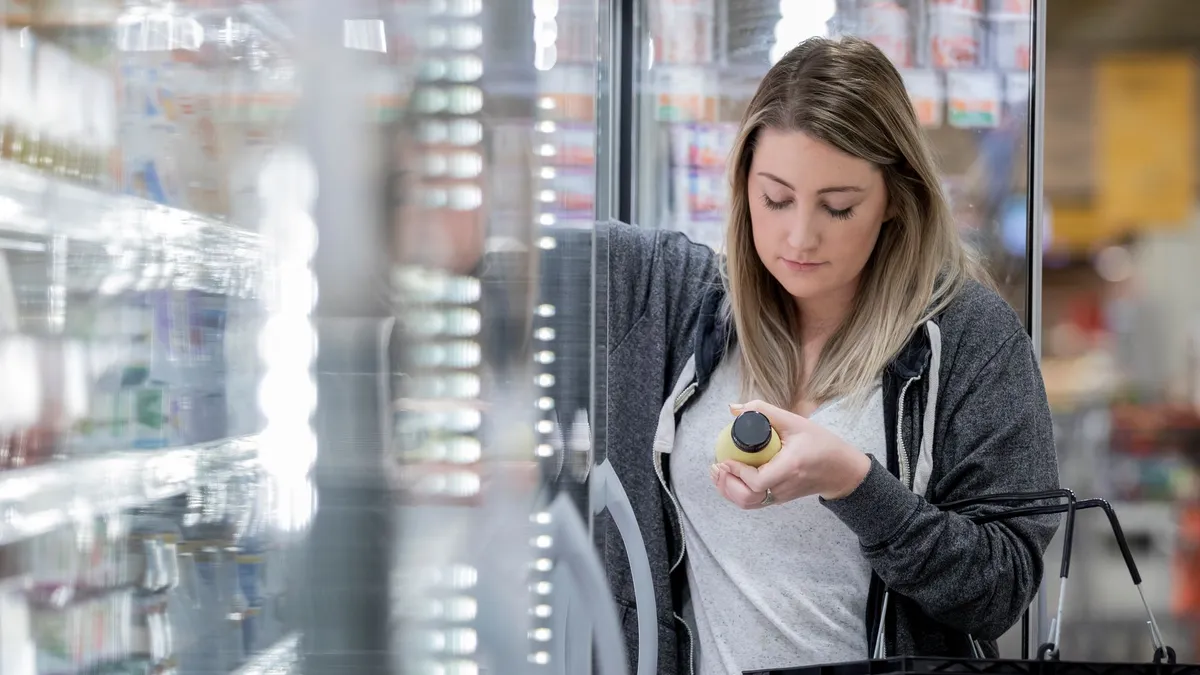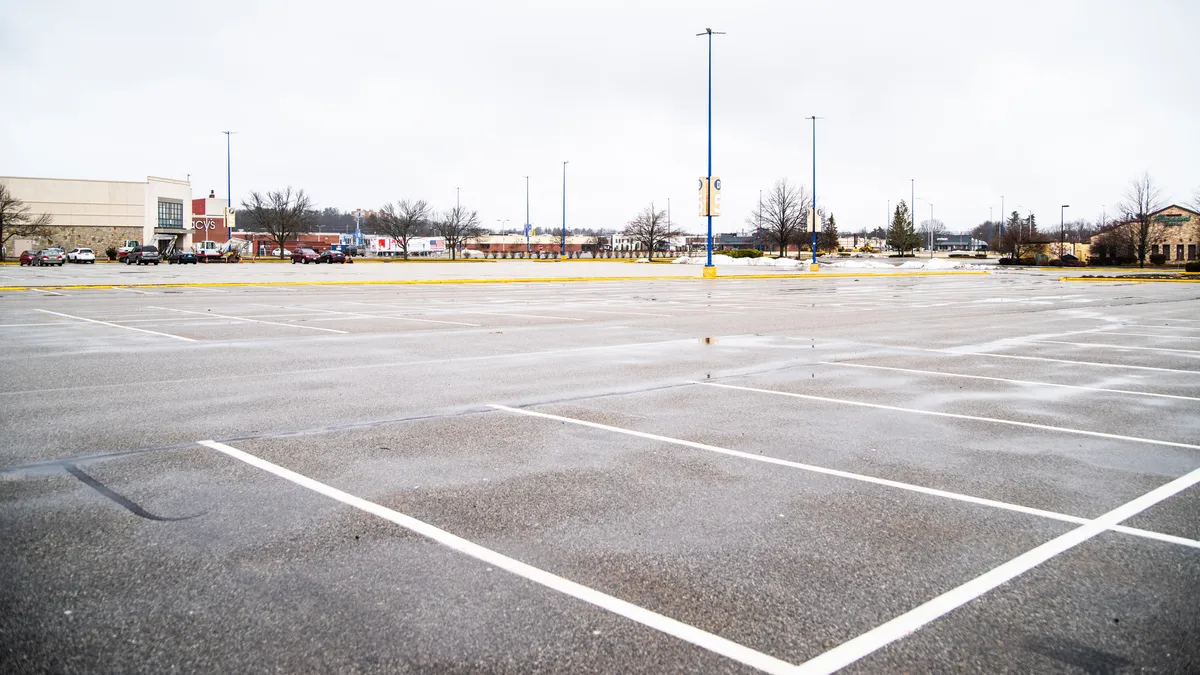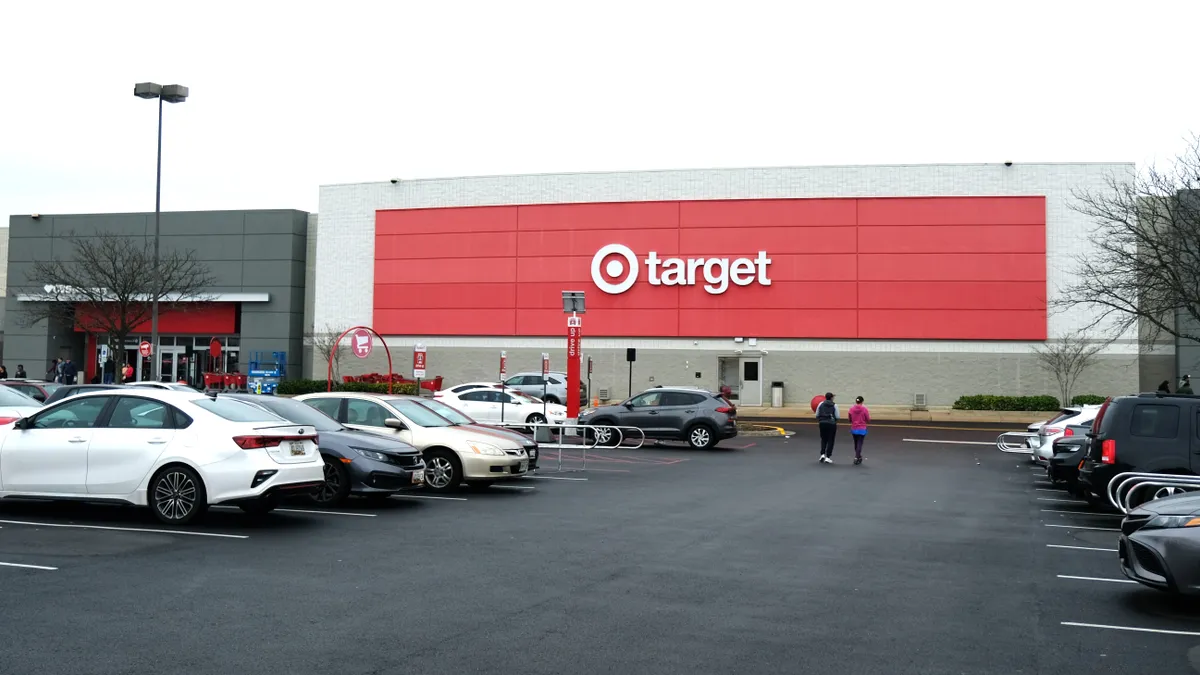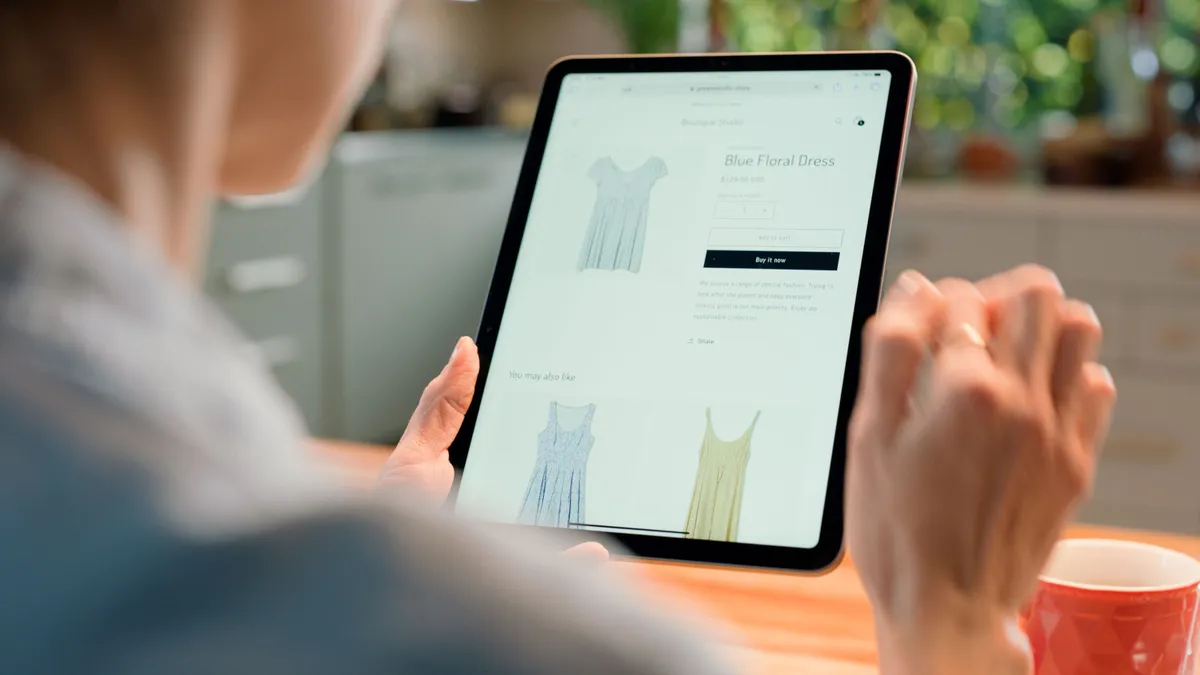Brick-and-mortar retail isn’t going away.
That seems obvious. Even as mobile continues to loom large and e-commerce in general grows—some 20% at the holidays this year by some measures—let’s remember that Americans still shop in stores some 95% of the time.
But brand intelligence firm L2 doesn't leave it at that, saying in a recent report with strong, detailed evidence, that, in most cases, there simply is no successful e-commerce for brands without physical retail.
L2 notes, as others have, that Amazon itself continues to struggle with profitability, at least in the eyes of its investors, and depends on its cloud services to back up its e-commerce performance. Although the e-retail giant just reported its most profitable quarter yet, its share price fell due to missed expectations. (Not to mention, it’s also recently opened its first true brick-and-mortar store.)
“Notably, excluding Amazon, pureplay e-commerce retail and software companies made up just a fraction of sales, with the lion’s share captured by omnichannel retailers,” reads the report, entitled “Death of PurePlay Retail."
The turnaround of Restoration Hardware
There may not be a better example of a company operating with the potential of the physical in mind than upscale furniture retailer Restoration Hardware, which, after going private in 2008 (then becoming public again in 2012), has come roaring back with an intense sales strategy that emphasizes stores and the customer experience.
CEO, Gary G. Friedman, recently told investors that “the physical manifestation of an aspirational brand, in an inspiring three dimensional environment, will prove to be more valuable than a one-dimensional online store.”
“We’re no longer alone in our thinking as online only retailers are opening stores and learning about the power of physical with digital,” Friedman said in December, echoing just what L2 maps out in its report.
In December the company announced its 2015 third quarter results, reporting its 23rd consecutive quarter of revenue growth with a 10% increase year-over-year.
Beyond walls
So physical stores remain important, if not essential. But having four walls and well stocked shelves is hardly the name of the game anymore. More than ever, retailers dedicated to pleasing their customers via all channels must give their stores the attention they’re due.
“In my opinion, ‘customer experience’ is the meticulously planned, end-to-end design of every customer interaction with a business,” retail futurist Doug Stephens told Retail Dive. “It’s the sum total of the specific things the customer experiences, from the moment they become aware of a brand or business until well beyond their purchase.”
What does this mean for stores, really? The same that it does for every channel, in the end, Stephens says.
“The truth is, most of our experiences as consumers happen almost accidentally,” he notes. “Many retailers may have a general idea of the experience they want in their stores, but only a few have taken the pains necessary to engineer, plan, and stage those experiences with precision. That engineered quality of experience is precisely what has made retailers like Apple, Starbucks, and Sephora strong. The experience you receive in a Starbucks, Apple store, or Ritz hotel is not accidental but completely deliberate and by design.”
But mobile and the web are part of physical retail, too, notes Gary Ambrosino, president-CEO of retail appointment solutions platform TimeTrade. Smartphones in particular, Ambrosino says, are transforming the way people shop, even in stores.
"There is a difference in the world now between shopping and buying, that’s what the Internet has done," Ambrosino told Retail Dive. "Buying is done in the store, but a majority of the shopping is now done online."
Ambrosino cites TimeTrade research that found some 71% of shoppers said they're more likely to make a purchase when they've had a personalized experience in the store.
"That’s really the thing," he says. "It’s still that human to human interaction."
The new shopping mall
Experts haven’t just been declaring the death of brick-and-mortar stores for years now; they’ve also lamented, by extension, the end of the American mall. Certainly, many malls are struggling, and many others are even dead. Demographics may be contributing, with Americans, especially younger ones, returning to urban centers and more often staying there even after they have families. And, of course, the rise of e-commerce and the recent economic slowdown have helped stymie traffic to malls.
But other malls are thriving. Those that are benefit from good locations and a mix of retail with other well planned opportunities for food, entertainment, and community activities.
“The traditional model for malls has been 70% retail and 30% food and entertainment,” Stephens says. “Mall developer Allan Zeman maintains—and I agree with him—that those numbers now need to be inverted. Shopping centers should be community hubs, social gathering points, and entertainment complexes that also happen to have an assortment of awesome retail. We don’t need more retail, we need better retail. We don’t need more malls, we need special places that communities value and gather in.”
And that happens to sound exactly what Victor Gruen, the Viennese architect and planner who is credited with creating the American mall decades ago, had in mind in the first place: for malls to be special places that communities value and where people gather.
Fundamentals, plus technology
This is likely the year that retailers and brand marketers will realize that “personalization” is much more than the interruptive advertising made possible by beacons and other mobile-connected technology.
Savvy retailers know that, thanks to mobile, their customers have begun their shopping trip before they cross the store’s threshold. That means having an app or mobile-ready site that can smooth the path to your store, Bridget Johns, head of customer experience at in-store analytics firm RetailNext, told Retail Dive.
“Amazon has really changed the game because it’s so easy,” Johns says.“It’s nothing magical, I don’t get all warm and fuzzy shopping at Amazon. But know it’s going to be a clean and easy process. The first thing retailers have to do is remove the points of friction in the store, the lines at the fitting room, the queue at the checkout. Then you can start to really work to create a more magical shopping experience.”
Other fundamentals, like good lighting and displays, are proving to be important, as Target has found in recent months, Johns notes.
The role of the store associate
Yet, technology also has a role in creating a "magical shopping experience." Retailers should realize how powerful technology is in the hands of their store associates, perhaps as much as in the hands of their customers.
"Today’s retail associate is dealing with a whole new set of challenges that their predecessors never encountered,” said Vikas Aron, product management director at supply chain commerce solutions firm Manhattan Associates, told Retail Dive in an email. “Today’s retail associate needs to be part shopkeep, part fulfillment specialist, and part customer service agent. By using mobile devices and software solutions, smart retailers are arming store associates with the information they need to bridge the digital divide between their customers and associates.
“Retailers are asking store associates to take on an expanded role, from simply facilitating point of purchase sales and stocking shelves to managing the new 21st century stores, which includes in-store fulfillment, online returns, and other omni-channel challenges,” Aron adds.
Perhaps it shouldn’t take a Forrest Research study, but with the help of one, RetailNext, like TimeTrade, discovered that customers walk into a store expecting good service, and that it’s disappointing when it's absent. That study found that shoppers expect on-demand sales associates to be facilitators of exceptional shopping experiences, but just 29% of respondents feel sales associates actually are knowledgeable and helpful.
The range of expertise required of store employees requires good hiring, training, and wages, Johns says. Take Costco, where stores are straightforward, even plain, but which carries an appealing range of merchandise, keeps stores neat and shelves stocked, and enjoys an excellent reputation for customer service from employees, who enjoy above-market wages and benefits.
"Costco is, in its own way, as unstoppable as Amazon," retail veteran and Columbia University business professor Mark Cohen wrote in Forbes last week. "Their stores throughout the world are among the most productive in the industry, and, unlike most brick and mortar based retail businesses, seemingly untouched by customers’ stampede-like migration to the Internet."
Let’s go shopping
“Shopping” is an experience that is multi-sensory, a trip that online retailers can only hope to replicate (although they can in some ways, with some effort). More than half (65%) of shoppers say that if an item they want is available online or in a nearby store, they prefer to shop in store, and an overwhelming majority (85%) say it's because they like to ‘touch and feel’ products before they decide what they want to buy, according to research from TimeTrade.
Restoration Hardware’s Friedman believes the three-dimensional experience of a store is much more profound than social media marketing.
"[O]ur reluctance to follow the crowd and make unproven marketing investments has also confounded many critics," he says in the video prepared for investors. "We found no correlation between the number of friends you have on Facebook, or followers on Twitter, Instagram or Pinterest, to sales or earnings growth."
In many cultures over many years, we know that human beings have enjoyed shopping as an activity. And that’s what stores can still deliver, our experts say.
“Shopping should be an experience and the history of shopping suggests it can be,” Stephens notes. “I recently visited the Spice Bazaar in Istanbul and you see instantly how shopping evolved from being a completely immersive and sensory experience. The sights, sounds, smells and social interactions were incredible. Even the grand department stores of the mid-1800’s were a spectacle and an aesthetic delight.
“Unfortunately, as retail scaled through the 70’s 80’s and 90’s we lost that experiential nature,” he says. “Retail became more about the acquisition of material goods and less about the enjoyment we could have in shopping for them. Stores became concrete boxes, devoid of any beauty or soul. Thankfully, I think we’re heading into a new era where how things are sold will be as important as what is being sold.”



